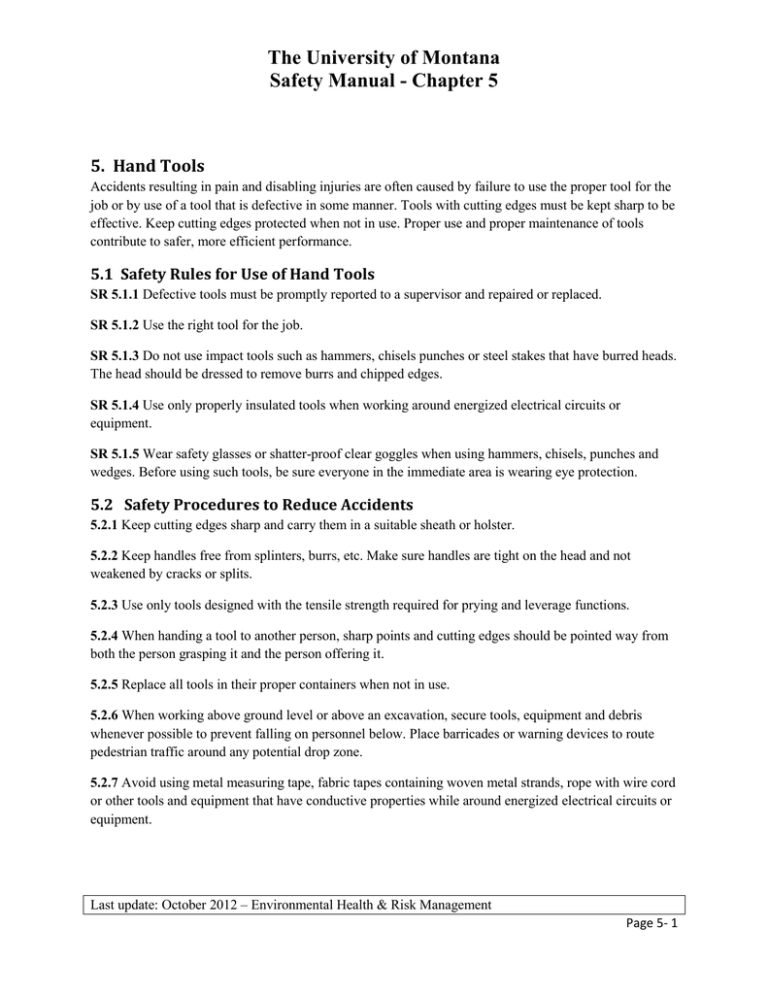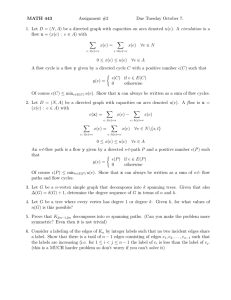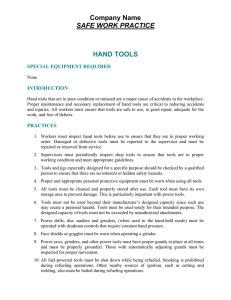The University of Montana Safety Manual - Chapter 5
advertisement

The University of Montana Safety Manual - Chapter 5 5. Hand Tools Accidents resulting in pain and disabling injuries are often caused by failure to use the proper tool for the job or by use of a tool that is defective in some manner. Tools with cutting edges must be kept sharp to be effective. Keep cutting edges protected when not in use. Proper use and proper maintenance of tools contribute to safer, more efficient performance. 5.1 Safety Rules for Use of Hand Tools SR 5.1.1 Defective tools must be promptly reported to a supervisor and repaired or replaced. SR 5.1.2 Use the right tool for the job. SR 5.1.3 Do not use impact tools such as hammers, chisels punches or steel stakes that have burred heads. The head should be dressed to remove burrs and chipped edges. SR 5.1.4 Use only properly insulated tools when working around energized electrical circuits or equipment. SR 5.1.5 Wear safety glasses or shatter-proof clear goggles when using hammers, chisels, punches and wedges. Before using such tools, be sure everyone in the immediate area is wearing eye protection. 5.2 Safety Procedures to Reduce Accidents 5.2.1 Keep cutting edges sharp and carry them in a suitable sheath or holster. 5.2.2 Keep handles free from splinters, burrs, etc. Make sure handles are tight on the head and not weakened by cracks or splits. 5.2.3 Use only tools designed with the tensile strength required for prying and leverage functions. 5.2.4 When handing a tool to another person, sharp points and cutting edges should be pointed way from both the person grasping it and the person offering it. 5.2.5 Replace all tools in their proper containers when not in use. 5.2.6 When working above ground level or above an excavation, secure tools, equipment and debris whenever possible to prevent falling on personnel below. Place barricades or warning devices to route pedestrian traffic around any potential drop zone. 5.2.7 Avoid using metal measuring tape, fabric tapes containing woven metal strands, rope with wire cord or other tools and equipment that have conductive properties while around energized electrical circuits or equipment. Last update: October 2012 – Environmental Health & Risk Management Page 5- 1











